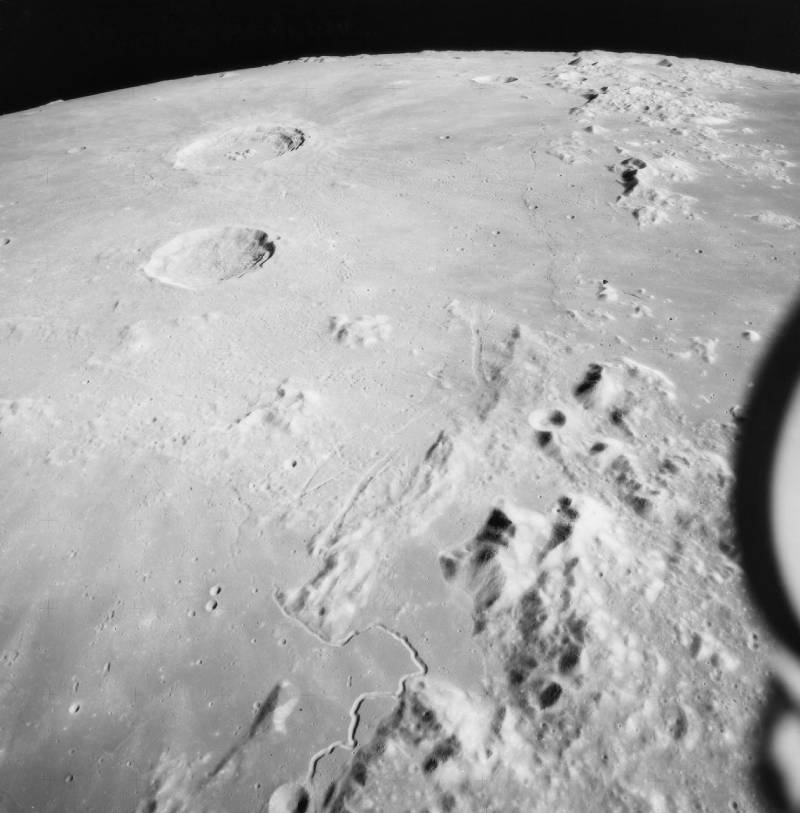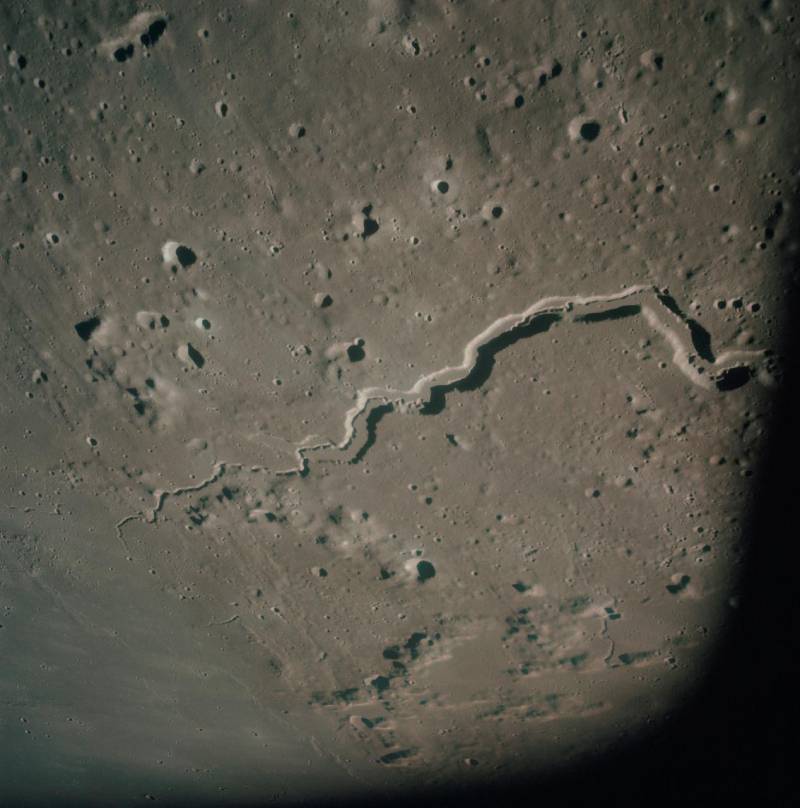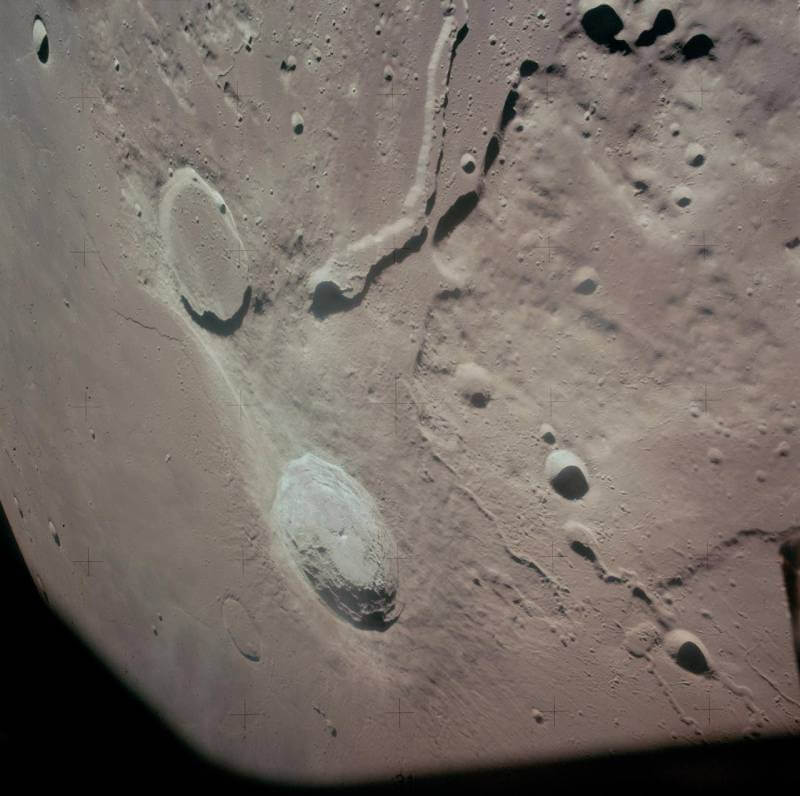While the Moon’s barren and wild appearance may deceive a casual observer, its surface has intriguing geological features. One interesting feature on the Moon’s surface is the valleys. These valleys, also known as sinuous rillies or rillies, are often named after nearby craters. These winding depressions or channels on the Moon’s surface come in different sizes, with some being only a few kilometers and others extending up to hundreds of kilometers – different widths and depths.
How Were The Lunar Valleys Formed?
One of the most interesting theories about the sinuous valleys once suggested that they may have formed by the water flow on the Moon. However, a closer evaluation of their shape and absence of water in the samples from the Moon brought by different missions has yet to determine the credibility of this idea. Instead, two alternative explanations came up. The first explanation suggests that lunar valleys may have been created by sinking and faulting the Moon’s crust.
According to this hypothesis, tectonic forces on the Moon’s surface could have caused fractures in the ground. As a result, it forms the winding depressions. Another hypothesis suggests they are remnants of lava channels or collapsed lava tubes. This idea is supported by the various valley shapes observed, implying that a combination of these processes contributed to the formation. Interestingly, some rallies look like pure fault troughs, while others have progressed from valleys initially sculpted by flowing lava, eventually modified by materials accumulating from the valley walls.
Findings From Apollo 15 About Lunar Valleys
Interestingly, during Apollo 15 astronauts, data collected from the mission gave more information about the valleys. Their landing site near Hadley Rille showed layered basaltic lava flows exposed in the valley walls. The rocks found were unique among the lunar samples, were relatively untouched by impacts, and can be referred to as lunar “bedrock” samples. The Hadley Rille originates within a volcanic crater on the Apennine Mountains flank and curves into the Imbrium basin. This uneven floor suggests potential lava eruptions along its course, attributed by points jutting into the channel on the rounded opposite shores and one side.

Additionally, some sinuous channels show smaller valleys exhibiting multiple valley formation episodes. Other valleys follow meandering courses that neither commence nor conclude with craters, which form lava plains, making it difficult to understand the direction of their flow. Lastly, there are specific rillies that emerge on mountainsides with ejecta – which is debris ejected during major impact basin-forming events. These particular features of the valleys remain somewhat mysterious as their formation continues to defy conventional explanation.
Are There Any Valleys On The Moon?

Now that you understand the whole formation and history of the Moon and have affirmed that, indeed, there are valleys on the Moon, here’s a list of those valleys:
- Vallis Alpes
Also referred to as Alpine Valley, it is one of the most recognizable and notable valleys. The formation they are believed to have been formed as a result of a collapsed lava tube. This valley stretches approximately 10 kilometers in width and 166 kilometers in length. Additionally, it runs through the Montes Alpes mountain range.
- Vallis Baade
This valley is located near the Baade crater, and its origin name comes from Waler Baade. It stretches up to 294 kilometers. Interestingly, its formation is linked to lava flows and volcanic activity, which shaped the sinuous course.
- Vallis Inghirami
Does the name ring a bell? This valley is named after the Italian astronomer Inghirami. It spans approximately 76 kilometers and is located in the Moon’s Southern highlands. It is attributed to its relatively straight path compared to other valleys on the Moon. It is believed to be formed from lava flows.
- Vallis Bohr
The name originates from Niels Bohr, a Danish physicist. This valley extends to about 104 kilometers in length. It is known for its location near the large crater Grimaldi and its winding course. Vallis Bohr is believed to be a lava channel like the other lunar valleys, shaped by ancient volcanic eruptions.
- Vallis Snellius
This valley’s name originates from Willebrord Snell. With a length of 212 kilometers, this valley is located in the rugged terrain near the Snellius crater. It was formed through tectonic and volcanic processes and exhibits a meandering pattern.
- Vallis Rheita
It is known for its relative shortness compared to other valleys, with approximately 487 kilometers long. It is believed to have formed due to tectonic activity, with the surrounding crust being pulled apart. It lies near the Rheita crater that was created by a meteorite impact. Its name originates from Anton Maria of Schyrie of Rhaetia.
- Vallis Bouvard
Named after Alexis Bouvard, a French astronomer known for his work on celestial bodies. This valley is located in the Moon’s northern hemisphere and is known for its winding course. It is believed to be formed from ancient lava flows.
- Vallis Capella
This valley is named after the start of Capella and stretches across the surface of the Moon with a very distinct meandering pattern and was formed from volcanic activity.
- Vallis Palitzsch
The valley was named after a German astronomer, Johann Geord Palitzsch, who observed the return of Halley’s Comet. It was formed through lava-related processes.
- Vallis Planck
It was also named after a German physicist, Max Planck, who was one of the founders of quantum theory. The valley has a huge and twisted path formed through ancient volcanic activities.
- Vallis Schrodinger and Vallis Schroter
These two valleys are often confused and similarly interchanged due to their similar names. The main difference is that Vallis Schroteri is more distinct and has unique features like jugged walls and a winding path. Vallis Schrodinger was formed through tectonic and volcanic activities, while Schroteri was formed from lava flows.
Conclusion
Unique formations and mechanisms have shaped each sinuous valley on the Moon. Based on the earlier discussed hypothesis, most valleys resulted from basaltic lava channeling. Yet, their origins come from initial fault troughs that experienced concealment and modification due to landslides from the walls, impact-related materials, and lava flows. These valleys are still up for research, and we can always learn more from the scientists exploring the lunar space.

